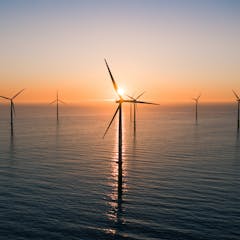
Articles on Energy policy
Displaying 1 - 20 of 194 articles

Alberta’s new social studies curriculum misses the mark on child development, lacks adequate opportunities for critical thinking and neglects teaching about colonization.

Australia’s increasing energy demand is inconsistent with global efforts to tackle climate change and suggests our housing energy policy requires a radical rethink.

The new fuel efficiency standards regime will move Australia in the direction of comparable countries, but it has its critics. Minister for Climate Change and Energy Chris Bowen joins the podcast to discuss this policy and more

California is one of the world’s largest economies, and it’s aiming for net-zero emissions by 2045. A transportation expert involved in the plan explains why it just might succeed.

Australia is an exception among developed nations in having increased energy use per person since 2005. A new consultation paper offers hope of policies that can lift the nation’s energy performance.

Russian President Vladimir Putin has not hesitated to use energy as a weapon. An expert on global energy markets analyzes what could come next.

Australia last week moved to tackle the climate crisis when federal parliament passed Labor’s climate bill. But the new law is just the first step.

While a US transition to renewable energy by 2030 is possible, streamlined policies with clear goals and incentives are necessary to get there, says an industrial engineering professor.

Using our oceans as carbon sinks could help achieve climate goals set in the most recent IPCC report.

It is deeply regretful that the budget and forward estimates don’t specifically recognise the ongoing scale and the fiscal impact of climate disasters.

It’s evidence of political solidarity and a strengthening of ties between Ukraine and the EU.

The ‘Energiewende’ relies on gas as a bridge between a coal-powered past and renewable future.

South Africa’s biggest successes in the last year in relation to energy have been in regulatory matters.

A tax credit for companies that invest in carbon capture technology would divert financing away from cheaper and safer climate solutions.

Renewable energy is expanding at a record pace, but still not fast enough. Here are the key areas to watch for progress in bringing more wind and solar into the power grid in 2022.

South Africa hasn’t achieved its policy objective of deregulating the fuel price because vested interests have opposed this, and the government doesn’t have the political will to implement the policy.

The roadmap predicts that by the 2030s, the sector could boost Australia’s annual GDP by around A$10 billion, create 26,200 jobs and reduce emissions by about 9%.

At COP26, governments will have to consider how climate policies help them achieve their emissions targets and affect economies.

Continuous growth of energy production and consumption, even from low carbon energy sources, could create more problems than solutions.

Reach net zero requires policies spanning energy, industry, transport, agriculture, land use, even trade. Climate change is a whole-of-government issue. It’s every minister’s problem.
